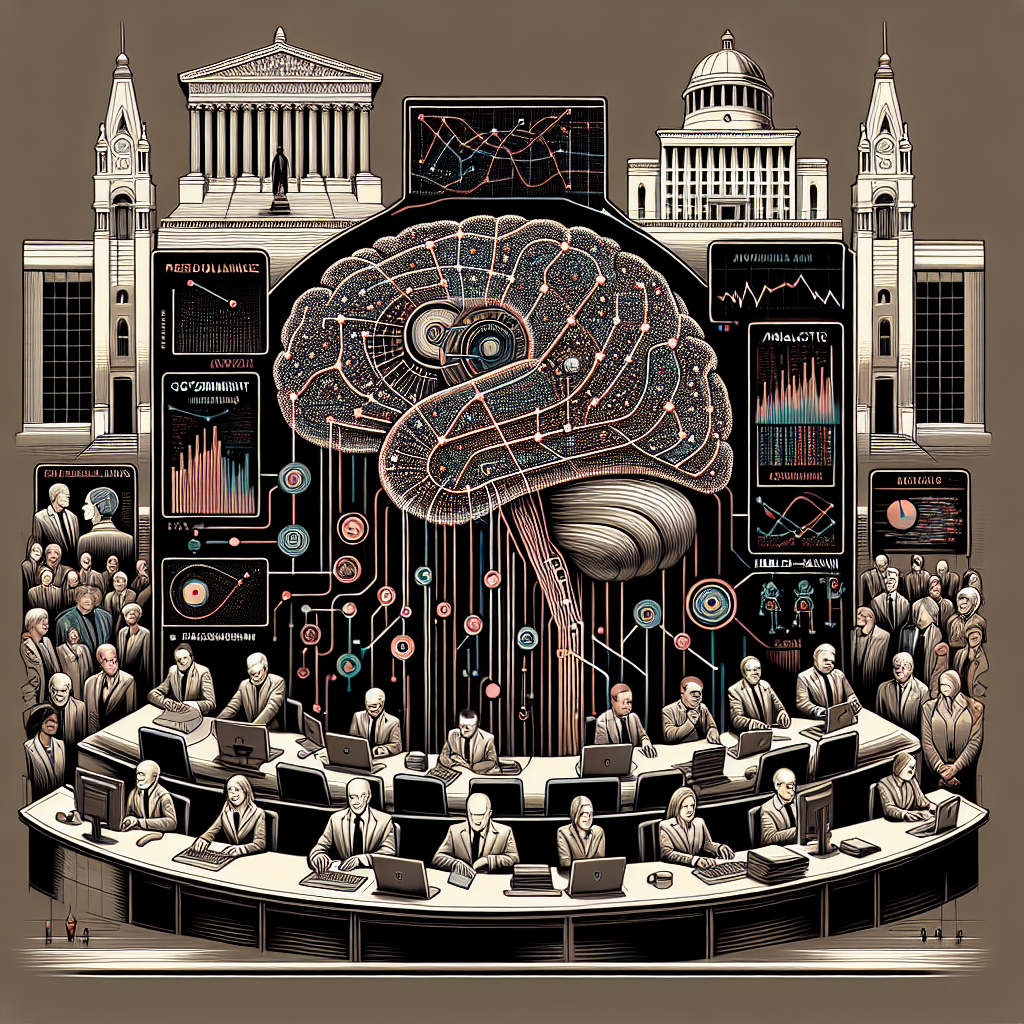Leveraging AI for Predictive Analysis in Government Planning
In today’s fast-paced world, governments are constantly looking for ways to improve their planning processes and make more informed decisions. One of the most effective tools for achieving this is leveraging artificial intelligence (AI) for predictive analysis. By using AI algorithms to analyze vast amounts of data, governments can gain valuable insights into trends, patterns, and potential future outcomes. This allows them to better anticipate and plan for future challenges, allocate resources more efficiently, and ultimately, improve the effectiveness of their policies and programs.
Predictive analysis is a form of data analysis that uses historical data to predict future outcomes. By analyzing patterns and trends in the data, AI algorithms can identify correlations and make predictions about future events. This can be especially useful in government planning, where decisions often have far-reaching consequences and need to be carefully considered.
There are several ways in which AI can be leveraged for predictive analysis in government planning:
1. Forecasting trends: AI algorithms can analyze historical data to identify trends and patterns that can help predict future events. For example, AI can analyze demographic data to predict future population growth, or analyze economic data to predict future trends in the economy. This information can help government agencies plan for future infrastructure needs, allocate resources more effectively, and make informed policy decisions.
2. Risk assessment: AI can also be used to assess risks and potential threats to government programs and policies. By analyzing data on past events and identifying risk factors, AI algorithms can help governments anticipate and mitigate potential risks before they become a problem. This can be especially useful in areas such as national security, disaster preparedness, and public health.
3. Resource allocation: AI can help governments allocate resources more efficiently by analyzing data on past resource usage and predicting future needs. By using AI algorithms to optimize resource allocation, governments can ensure that resources are being used effectively and that they are able to meet the needs of their citizens.
4. Policy evaluation: AI can also be used to evaluate the effectiveness of government policies and programs. By analyzing data on program outcomes and identifying patterns in the data, AI algorithms can help governments assess the impact of their policies and make adjustments as needed. This can help governments ensure that their policies are achieving their intended goals and are having a positive impact on their citizens.
Overall, leveraging AI for predictive analysis in government planning can help governments make more informed decisions, allocate resources more effectively, and improve the effectiveness of their policies and programs. By harnessing the power of AI algorithms to analyze vast amounts of data, governments can gain valuable insights into trends and patterns that can help them anticipate and plan for future challenges.
FAQs
Q: How does AI help in predictive analysis in government planning?
A: AI algorithms can analyze vast amounts of data to identify trends, patterns, and correlations that can help predict future events. By using AI for predictive analysis, governments can gain valuable insights into future trends, risks, and resource needs, allowing them to make more informed decisions and allocate resources more effectively.
Q: What are some examples of how AI can be used in government planning?
A: AI can be used in government planning to forecast trends, assess risks, allocate resources, and evaluate policies. For example, AI algorithms can analyze demographic data to predict future population growth, analyze economic data to forecast future trends in the economy, and assess risks and threats to national security or public health.
Q: Is AI for predictive analysis in government planning accurate?
A: While AI algorithms can provide valuable insights into future trends and patterns, it is important to note that predictive analysis is not always 100% accurate. There are always uncertainties and variables that can impact the accuracy of predictions. However, by using AI for predictive analysis, governments can make more informed decisions and better prepare for future challenges.
Q: What are some challenges in leveraging AI for predictive analysis in government planning?
A: Some challenges in leveraging AI for predictive analysis in government planning include data privacy concerns, the need for high-quality data, and the complexity of AI algorithms. Governments must also ensure that they have the necessary expertise and resources to effectively implement AI for predictive analysis in their planning processes.

